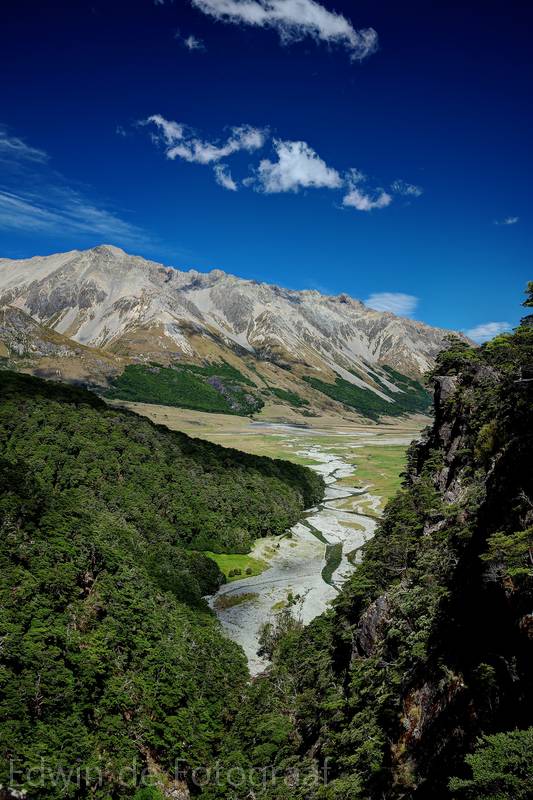
This is the very same photo as the photo in my other post about today. It was a lovely day where a bunch of us went up the Ahuriri Valley to walk the Canyon Creek Route. I know this valley quite well as I have been here numerous times and fly my glider in this area all the time when flying from Omarama. The only things that would fly in this valley are gliders, occasionally paragliders and there might be the odd powerplane, but that’s really it. Now something about photography. I regularly use the High Dynamic Range (HDR) technique when making photos. What it comes down to is that you make for example 3 photos in very short succession: 1 that is normally exposed, 1 that is overexposed (brighter than normal) and 1 that is underexposed (darker than normal). You then let some clever software take the best parts of the 3 photos and merge them together. That is how the very photo above was made. So it’s made out 3 separate photos. Below you will see those 3 separate photos that for this occasion I have adjusted to all show the same brightness, that is: I have decreased the brightness of the overexposed photo and increased the brightness of the underexposed photo so they all look the same as the normally exposed photo. This so comparison of the photos is easier
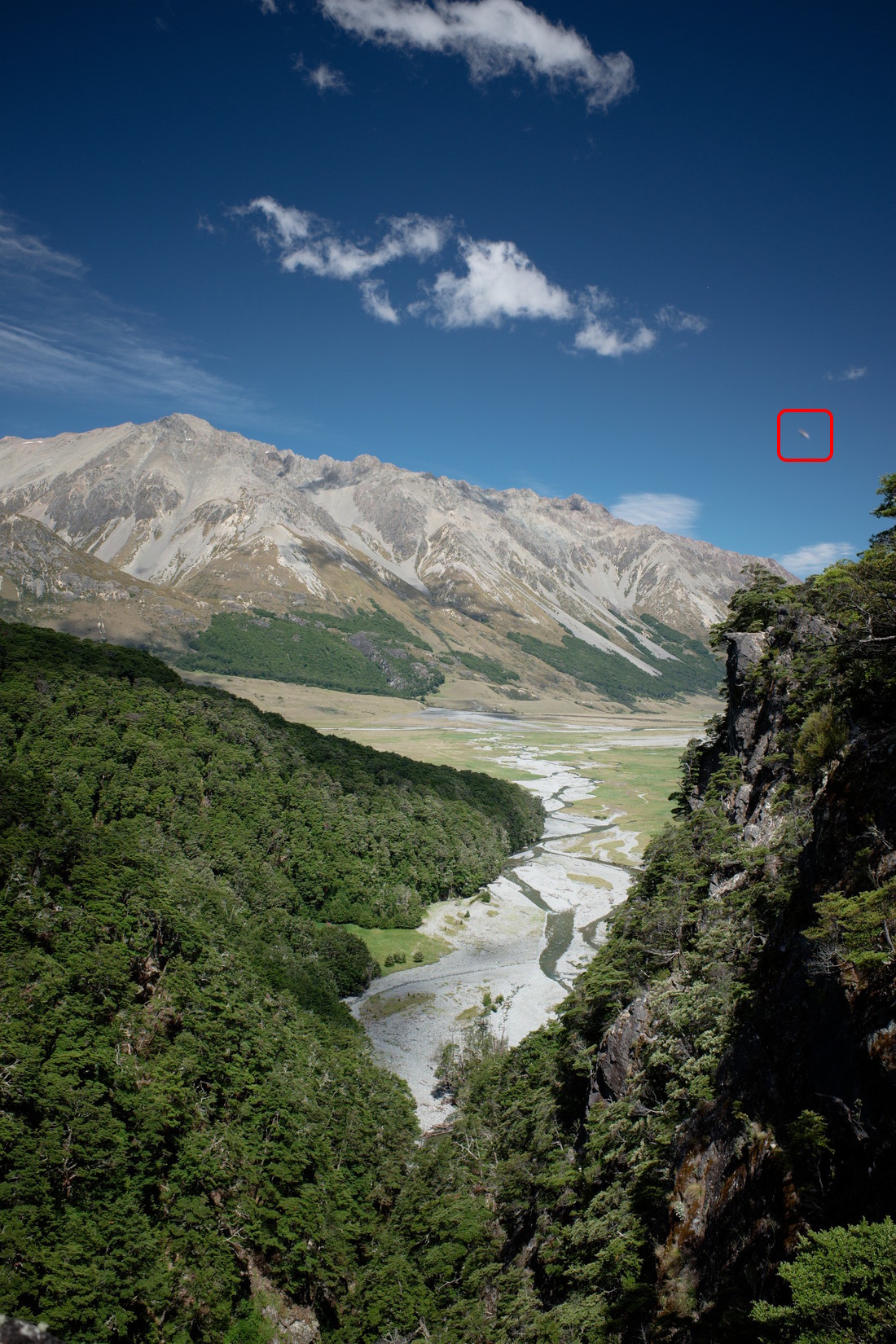
This is the 1st photo of the 3 photos that were taken, this is the normally exposed photo. It has a shutter speed of 1/168s. In the red square you see something that I didn’t notice when taking these photos but that I did notice when looking at the photos back home on my PC
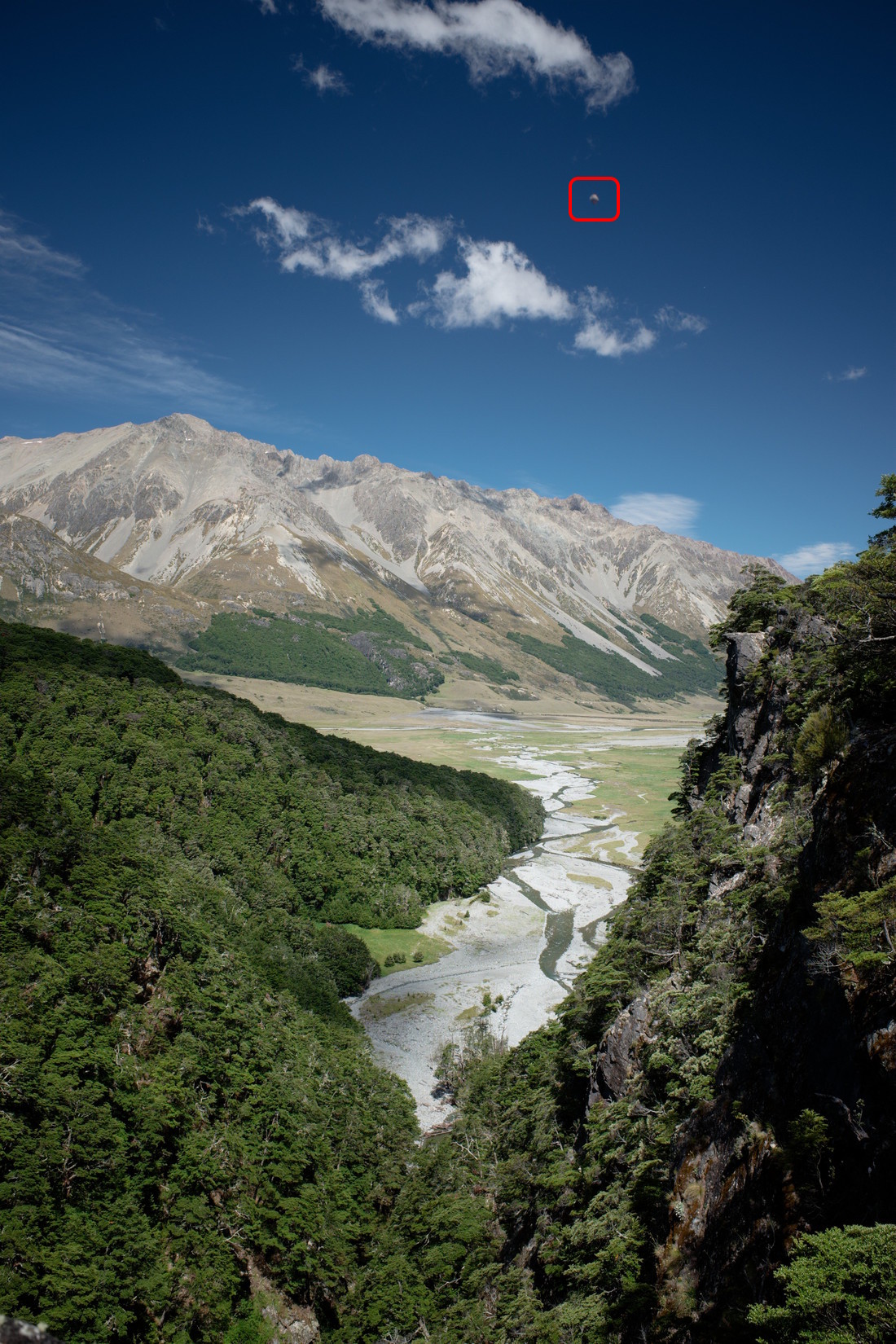
This is the 2nd photo of the 3 photos, taken immediately after the first photo. This is the overexposed photo (brightness manually decreased by me for ease of comparison). The shutter speed of this photo is 1/84s, so the shutter was open twice as long as in the photo above (so 1 stop overexposed). In the red square again the object that was already visible in the first photo, it is traveling towards us. That is: traveling north
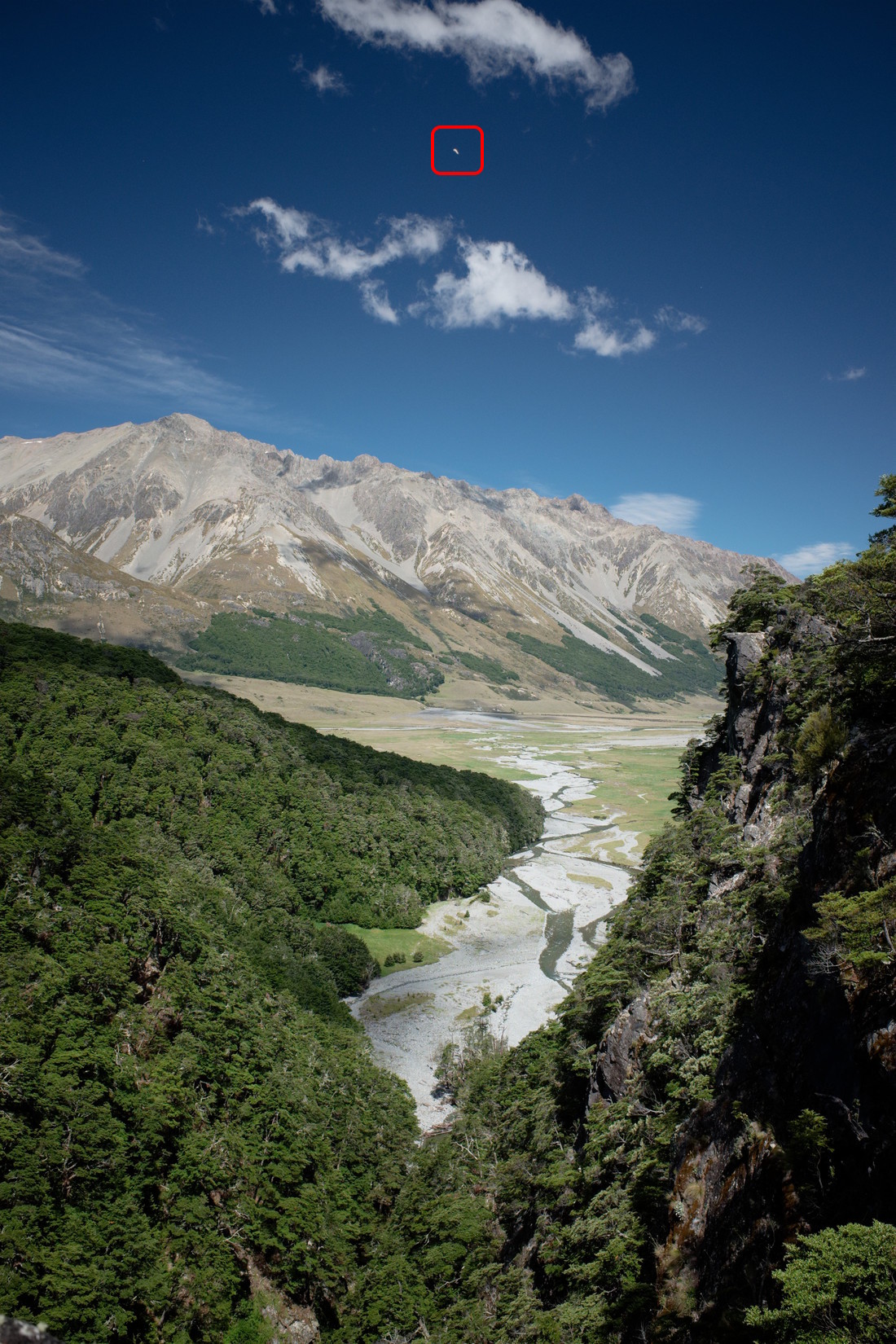
This is the 3rd photo, the 1 stop underexposed one (brightness manually increased by me afterwards for ease of comparison), taken immediately after the 2nd photo. The shutter speed of this photo is 1/320s, so this photo should ‘freeze’ the object the best from the 3 photos taken because it should have the least amount of motion blur. Motion blur is caused by the subject moving while the shutter of the camera is open. The object has once again traveled further north
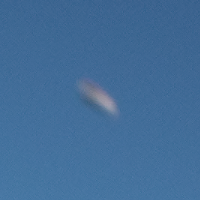
Here is a crop of the object from the 1st photo. A lot of motion blur, I can’t really make out what it is. It looks grey
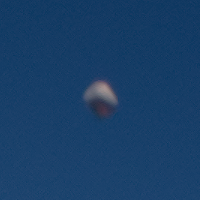
A crop of the object from the 2nd photo. It looks more square here, it’s clearly lit from above but it seems to have some orange glow on the bottom
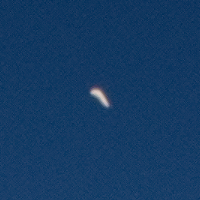
The 3rd photo, the underexposed one (brightness manually increased by me afterwards for ease of comparison). This should technically be the most clear photo because of the least amount of motion blur but I still find it impossible to speculate what it is (could it be a weather balloon?). It seems pill-shaped. I find it hard to estimate what height the object is flying at but to me it seems to at least be no higher than the mountains (e.g. the Barrier Range) surrounding the valley, making it unlikely to be anything like a jet plane, it also seems to travel at very high speed, given that the 3 photos were taken within a total time frame of 2 seconds. Three things are for sure though: it’s flying, I don’t know what it is but it’s some object, it therefore is an Unidentified Flying Object, a UFO. I have captured a UFO by sheer luck. The photos were taken with a Fuji X70 on a tripod and in RAW (.RAF) format. Anyone wanting to do their own analysis on the RAW files: contact me
Thanks for posting these along with the descriptions and analysis. Amazing
Het is i.i.g. heel geen vogel! Bijzonder curieus verschijnsel heb je vastgelegd, Ed.
Nu nog een foto van de drinkende dieren.